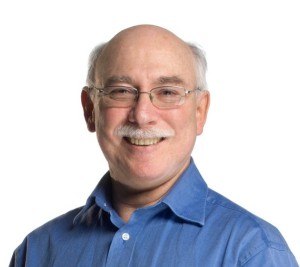
Henry Jay Forman is Research Professor of Gerontology at the University of Southern California and Distinguished Professor Emeritus of Biochemistry, University of California, Merced. He received his B.A. in Chemistry from Queens College, City University of New York and Ph.D. in Biochemistry from Columbia University and was a postdoctoral fellow at Duke University. Forman’s previous positions include University of Pennsylvania (Physiology), University of Southern California (Pediatrics, Pathology & Molecular Toxicology) and the University of Alabama, where he was the Chairman of Environmental Health Sciences. He was a Founding Faculty member of the University of California campus at Merced where he participated in establishing both science and general education programs as well as helping start their doctoral programs. In 2014, he returned full-time to the University of Southern California. Dr. Forman is Past President of the Society for Redox Biology and Medicine (formerly the Society for Free Radical Biology and Medicine) and is now Editor-in-Chief of Archives of Biochemistry and Biophysics. Previously, he served as Treasurer of the Society for Free Radical Research International and as the Reviews Editor for Free Radical Biology & Medicine. Dr. Forman has mentored over thirty Ph.D. and postdoctoral trainees.
Dr. Forman’s research is in oxidative stress and signal transduction. His did pioneering work in mitochondrial superoxide production in which he demonstrated that manganese superoxide dismutase actually pulls the reaction forward, redox signaling in which he first demonstrated signaling by endogenously generated hydrogen peroxide, and mechanisms of induced resistance to oxidative stress in which he demonstrated the induction of glutathione biosynthesis by quinones. His current research focuses on the decline in antioxidant protection in aging that increases susceptibility to inflammation through altered Nrf2 and NF-kB signaling and on the role of oxidative stress in the pathology of sickle cell disease. He has over 190 peer-reviewed publications, has edited three science books, and authored a mystery novel.
Redox signaling: an evolution from free radicals to aging
Henry Jay Forman
Davis School of Gerontology, University of Southern California
Although Warburg and Szent-Gyorgyi had long before proposed that redox reactions regulated alterations in cells, particularly in transformation to cancer, and others showed that adding H2O2 to cells could stimulate cell growth, it was not until the discovery of superoxide dismutase by McCord and Fridovich that the concept of free radicals were part of normal cell functions took hold. I was fortunate to be involved in the earliest studies in the field of what became known as free radical biology. This presentation will describe the evolution of the field from the days when free radical generation implied only pathology to the present situation in which the field has become known as redox biology and encompasses both pathology as well as the role of oxygen-derived oxidants and other electrophiles in cell signaling. The progression involves discoveries of mitochondrial H2O2 production by Boveris and Chance, adaptation to hyperoxia by Crapo and Tierney, the gamma-glutamyl cycle by Meister, neutrophil O2.- production by Babior, H2O2-stimulated NF-kB activation by Bauerle, the multiple roles of 4-hydroxynonenal by Esterbauer, and the free radical theory of Harman. This is a personal perspective based on my experience of over 45 years in the field.

